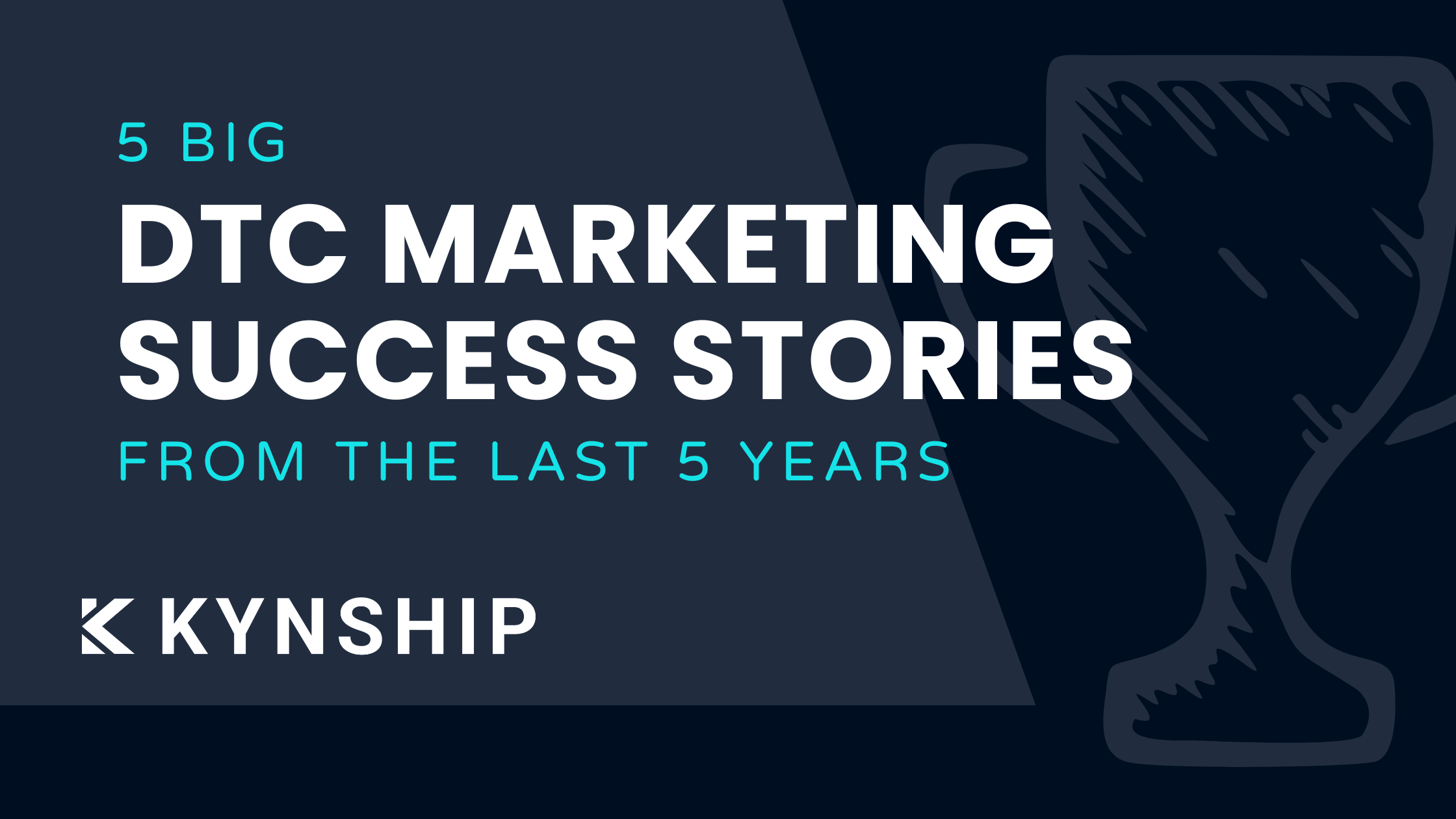Social Influencers and the History of Clout

Influencers are the new gatekeepers when it comes to visibility and brand recognition.
An endorsement from an influential Instagram personality can hold more authority than messaging from the company itself. For that reason, agencies are dedicated entirely to influencer marketing.
The idea that one of these influencers could somehow show our products on their social channel is something dreams are made of. Think about it. Hundreds of thousands and even millions of engaged viewers watching their favorite internet personality using your product!
Are you a budding energy drink company? Imagine Logan Paul guzzling your taurine-laden beverage before his next questionably sanctioned boxing match. It doesn't matter if it tastes like gym socks and is manufactured in a chemical lab, you would become an overnight millionaire.

It’s all about the clout, and we love it! When it comes to brand awareness, we NEED it.
So with that being said, who created this idea of subtle marketing that would outperform all other forms of traditional marketing? A marketing style that in many instances we don't even realize we are looking at an ad. In our mind we are being given a recommendation from a trusted source. Genuine word of mouth advertising is a tale as old as time... or at least the Bronze Age.
When in Rome...
Ancient Roman Gladiators may have been the first influencers, I kid you not. Gladiators endorsed everything from wine to tunics. They used their popularity and visibility to influence purchasing behaviors. Oftentimes, they were only paid in the product they were endorsing.

In 2000, the blockbuster movie Gladiator had a scene that depicts these original influencers. One of the gladiators was shown endorsing a jug of olive oil on a billboard. Ultimately, the directors decided to cut the scene. The filmmakers were worried that a billboard in Ancient Rome was “hard to believe.” Those billboards however were very real, and many can still be seen today.
These gladiators were celebrities. They were major celebrities. A gladiator using your olive oil in ancient Rome would be the same as Russell Crowe who played a gladiator using your product today.
More Tea M’Lady?
When we think of amazing influencer collabs, there's one that sticks out in our mind as pure genius. Nick Offerman who plays renowned “man's man” Ron Swanson on Parks and Rec, has quite a cult following. Lagavulin Scotch teamed up with his woodsy and leather-bound book persona to push their scotch brand. The premise? Nick Offerman sipping Lagavulin Scotch for 45 minutes in front of a roaring fire without saying a word. That video has just shy of four million views and is one of Lagavulin’s best advertising campaigns to date.

As amazingly successful as that influencer collab was, it doesn't come close to what Josiah Wedgwood was able to accomplish in 1765. Josiah is the mastermind behind the first true influencer collaboration. Who did he collaborate with? Just the queen of England!
The crafty entrepreneur decided to make a tea set specifically for the queen. Nothing like this had been done before (shockingly). Through persistence and bribing the right people, he finally got his tea set in front of Queen Charlotte and King George III. What was so special about his tea set that it was only fit for royalty? Basically nothing. It was your typical tea set that would be found in homes everywhere. The only difference was who put their hands on it, and who would see them doing it.
Queen Charlotte was enthralled with her royal tea set. She ordered more to be delivered to various members of the royal family. Shortly thereafter, the King and Queen appointed him to the position of “Potter to her Majesty.” This title did not apply only to Josiah Wedgwood, but to his products themselves. From then on every piece of pottery he would produce would officially be known as “Queensware.”

Being the entrepreneur he was, Josiah was going to maximize the potential of the new title. He ran ads in all London newspapers promoting his products and the ringing endorsement from the Queen herself. He went a step further and began naming individual pieces after members of nobility. Income levels were quickly rising during this time and he knew exactly who he wanted his products marketed to. Josiah Wedgwood didn’t just invent influencer collaborations… he invented bougie. Take that Versace!
Even today, Wedgwood still represents the hallmark in fine china. The pieces are priced higher than nearly all of their competitors. Over 250 years later the royal endorsement of Wedgwood products still carries enough clout that people will pay a premium for the name.
History Repeats Itself
What goes around comes around, and history always repeats itself. The role of influencer has stayed relatively static and the only part that has changed is the medium.
The 1930’s gave us the iconic duo of Coca-Cola and Santa. Oh, Jolly Saint Nick. How can one figure be both the impetus of a child's yuletide affection and diabetes at the same time? Santa and Coca-Cola maintain their long-standing relationship with no sign of slowing down.

In the 1970s, Quaker Oats introduced us to Mikey, a hard-to-please boy in their famous commercial for Life cereal. The ad won a Clio in 1974; an accomplishment that recognizes innovation and creative excellence in advertising, design, and communication. It was so successful that it was aired for 12 years consecutively and is one of the longest continuously running campaigns ever. What child doesn't love a cereal originally designed to maintain “regularity” in geriatric breakfast aficionados?
The Proven Method That Keeps Proving Itself
The effectiveness of influencer marketing boils down to its simplicity. Word of mouth recommendation is a fundamental part of the human condition.
Who are you going to trust makes the best window cleaner? The billboard that says,
“Try this window cleaner, it's the best.”
Or your friend who says “This is the best window cleaner I have ever used! You should pick up a bottle.”
Now replace your friend with someone you admire or even strive to emulate. The answer is pretty clear.
We trust in the people we admire, and at a core level, we are averse to “in your face” advertising because we put our guard up. We are expecting to be duped. After all, they are after our hard earned cash right?

When I think of the true origins of influencer marketing, I picture prehistoric men teaching one another that cooked meat is delicious or describing the life changing benefits of the wheel.
It’s a Part of Who We Are
Influencer marketing has stood the test of time because it taps into a psychological need for collaboration and communication. It taps into an instinctual desire for trust and reliability from trusted parties. Humans want to be able to rely on each other and be part of a community. In a way, this form of subtle marketing profits off of our human instincts and our tribalistic tendencies. The basic instincts that are the basis of wanting to sit at the “cool table” in middle school.

There have been several misinformed cynics that say influencer marketing is merely a trend. You can hardly call something a trend that has existed as long as we have been a species. Influencers have always been a part of society. In fact, society itself wouldn't exist without them.
Influencer marketing is deeply ingrained into who we are as people, but we are just now reaping the rewards of its accessibility. Gone are the days where you need the Queen of England or a Hollywood movie star to endorse your product. All it takes is a recommendation or kind word from someone who has a following or niche authority. Authority that can come with as little as 500 subscribers on a Youtube channel.
What makes the contemporary era so much better than the previous, is the fact recommendations are authentic. In a world where authenticity becomes increasingly rare, a genuine response is worth more than its weight in gold. The catch 22 is that the product has to be good. An influencer that recommends a bad product to their audience for self-benefit loses credibility with their following.
Despite what the critics say, the fall of mass media advertising isn’t a somber affair because the new “secret sauce” is honesty. Honesty and authenticity will never go out of style. We are effectively seeing the end of the snake oil salesman and I’m fine with that.
From gladiators to Queens, to picky eaters, and even old St. Nick himself, history teaches us that influencer marketing existed before mass media existed. Before the waves of growth hackers and Tik Tok millionaires. Sure, the mediums may have changed, but the foundation has remained unchanged for as long as humans have been carving "Gorg was here" on cave walls.



5 DTC Marketing Success Stories From The Last 5 Years
Five real DTC marketing success stories from the last five years, breaking down how brands scaled despite rising CAC, creative fatigue, and tougher competition, plus key lessons you can apply today.

The New Ecommerce Growth Playbook For 2026
These are the ecommerce growth marketing strategies we are using right now to successfully scale DTC brands from $2M to $50M.
Bi-weekly tips to reduce your CAC
Join thousands of DTC operators and subscribe to Cut the CAC for insights from the Bottom Line Podcast and Kynship's growth strategies.


.avif)
.avif)
.avif)



